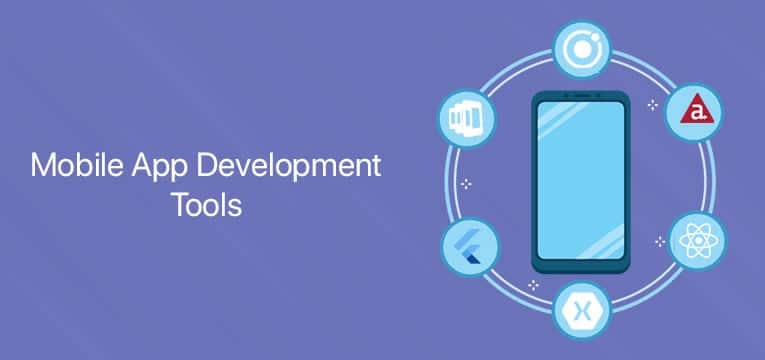There was a time when organizations rely on a specific device to carry on their business processes. Things however, have dramatically changed today, and businesses are trying to cater to a vast range of devices, which range from smartphones, tablets, and even state-of-the-art technologies, like smartwatches and wearables. With the multi-device requirements in mobile app development, IT teams are obligated continuously to come up with apps that could simplify the entire process by rendering simultaneous support to iOS and Android devices.
Perhaps this is the reason why more and more business organizations are seeking out tools for cross-platform mobile application development that could add inactivity to the development process and boost productivity later on. Cross-platform, what is it?
Cross-Platform Development: What’s It All About?
Cross-platform development means developing mobile apps that could be utilized on multiple platforms. With the demand for cross-platform solutions, a mobile app development company has to be updated on the best tools to remain on the competitive edge. The process could involve an organization that develops an original app on a native platform, such as Android, iOS, Windows Mobile, and others.
Moreover, it could also be developing an original application in a single environment development, which allows it to be sent to several native platforms. However, just like everything else, this development process also has drawbacks. For instance, mobile OS are updated often, and each time a system gets a new update, the apps should be updated as well to be compatible with the new system.
Fortunately, there are app development tools that could help you with the process. These tools could hasten delivery by simplifying the process of development. Moreover, the tools could be segregated widely into a couple of categories, namely the cross-platform hybrid tools and cross-platform native tools.
Cross-platform hybrid tools rely on standard technologies, which include JavaScript, CSS, and HTML5. They help create applications that run within the target devices’ native container. By splitting between platforms, the codes could speed up the development process.
Furthermore, they come at a lower price compared to native approaches. These apps nonetheless fail to release the unlimited potential of the device’s built-in capabilities, and could not perform as well as native applications.
The cross-platform native tools serve as a blend of a true hybrid and native development approach. Intermediate language, such as JavaScript and C#, is used to create multi-platform apps. The applications use the native UI controllers in striking contrast to the hybrid approach, which helps in unleashing the full potential of all the features of the device.
The Best Tools for Cross-Platform Mobile Apps

Titanium
The SDK of the tool operates with JavaScript. The system makes creating native apps for Android and iOS very easy. Moreover, it enables you to ruse between 60 percent and 90 percent of the same code for all apps, which is a great time saver.
For all mobile app development service providers out there who have done the process of coding before knowing the amount of effort and time, it takes to code from scratch. Titanium is a prevalent choice because of its ability to get a head start and more than half code done already. Also, the tool is open-source. Thus thousands of developers worldwide are making contributions regularly.
Unity3D
A great option if you’re developing a game. The graphics are absolutely amazing and could be used for more than just a mobile application. After developing code with C#, Boo, or UnityScript, you could export it to seventeen platforms.
After the game is up and running on all the various platforms, Unity3D could be used to help you distribute it to all the stores. It could also be used for tracking user analytics and getting social shares for your application. The tool has a network of experts and developers called the Unity Connect that helps you find and get questions answered.
Cocos2D
For a two-dimensional game app, consider this tool for cross-platform development. The same as Titanium, Cocos2d is open-source too, thus there are updates all the time and enhancements made by other developers. When you use these tools, you could choose between five various platforms or forks to develop with, such as Cocos2d-JS, Cocos2d-x, Cocos2d-Swift, Cocos2dXNA, and Cocos2d Python.
The differences between the forks are based on the programming language that a developer, such as a React Native app development provider prefers. For those familiar with Objective-C and XCode, then Cocos2d-Swift is a great choice. The versatility of the tool makes it extremely popular among developers.
Sencha
To develop with Sencha, you would have to use HTML5. They have many products, but the main one is Ext Js 5 for developers. Why developers like it is due to the fact that it works with various platforms and devices well.
Working with many team members is easier with Sencha. Ultimately, this enhances productivity, and offers a lot of pre-built elements as well, saving coding time. After developing the HTML5 code, integrating with iOS and Android is easy.
Sencha has great testing tools as well, with testing features meant specifically for applications created using Ext JS, thus you get the most accurate results. The right testing ensures quality and lowers the time and costs associated when testing from other resources.
PhoneGap Tool
Owned by Adobe, then you know the reliability and ease of use if you’re familiar with the other Adobe products. One of the best features of the tool for developing cross-platform is it being free. Moreover, translating code from JavaScript, CSS, and HTML5 is easy.
For first time developers, this is one of the top options to use. All the SDKs are maintained by PhoneGap, thus you need not worry about handling that. After you developed an app, sharing it with other members of the team is very simple.
The software lets you lower the time of development considerably. This is because you can reuse existing tools, web development skills, and frameworks. PhoneGap has a Hydration feature, which lets you build cycles, and do debug faster.
Conclusion
Building cross-platform mobile apps enable you to capitalize on the enormous audiences of various platforms easily and quickly. This allows your brand to maximize revenue. The mobile app tools above are just some of the many choices available for you to choose from.
DepositPhotos – mobile apps


